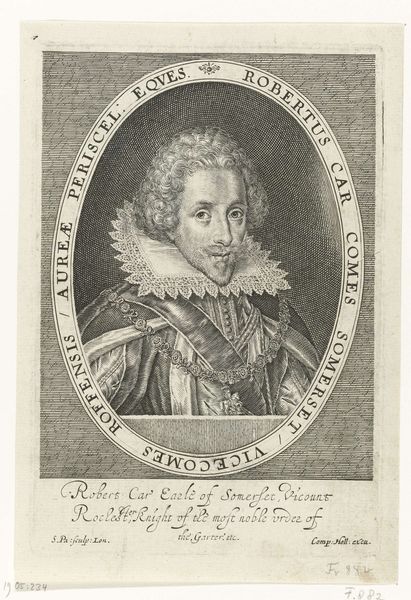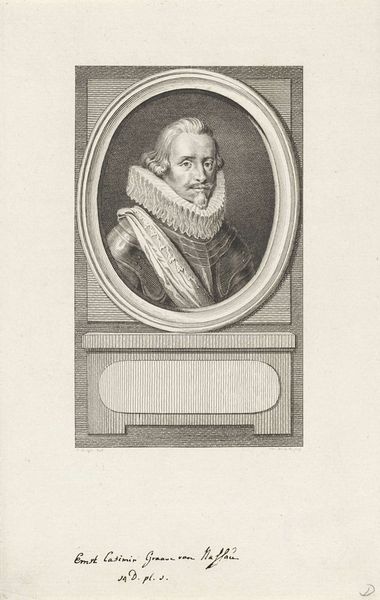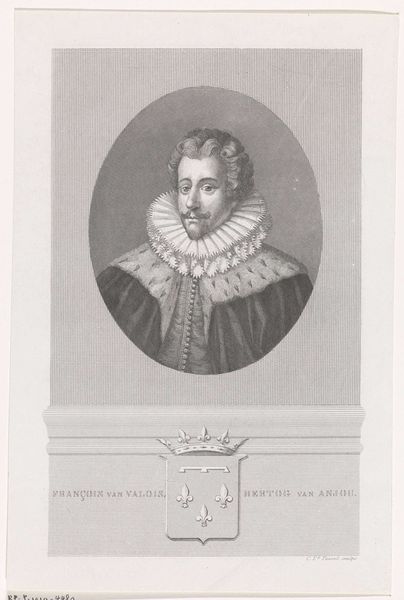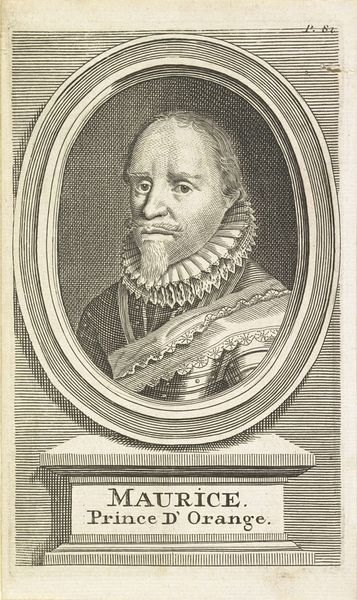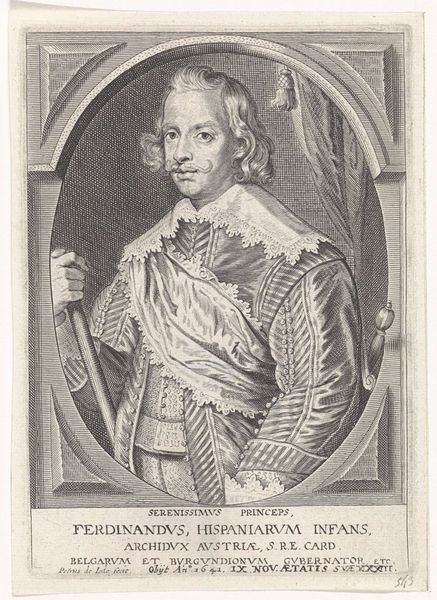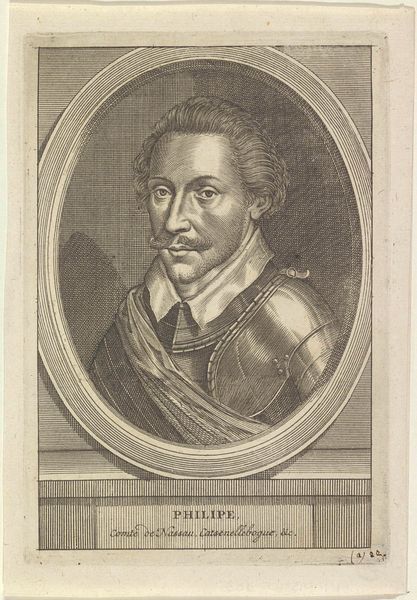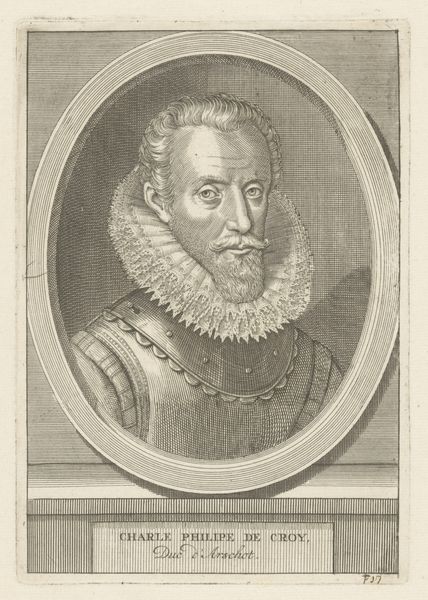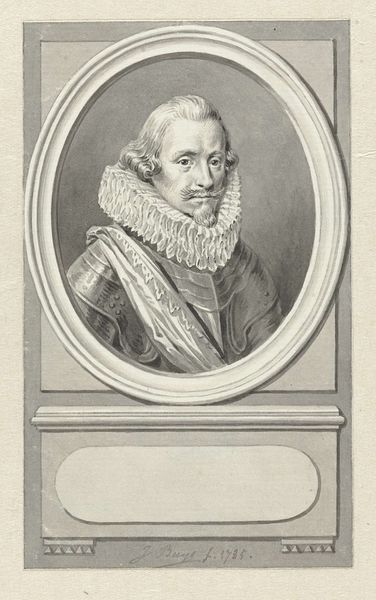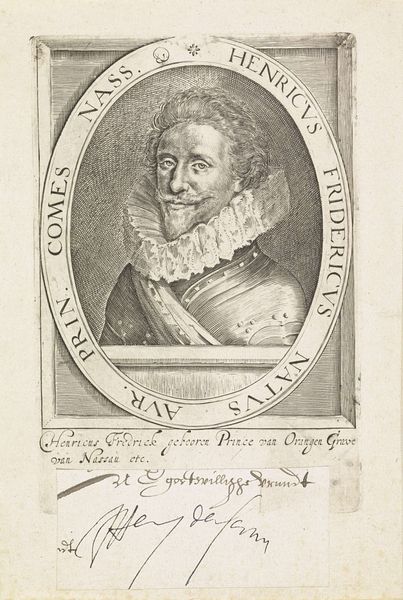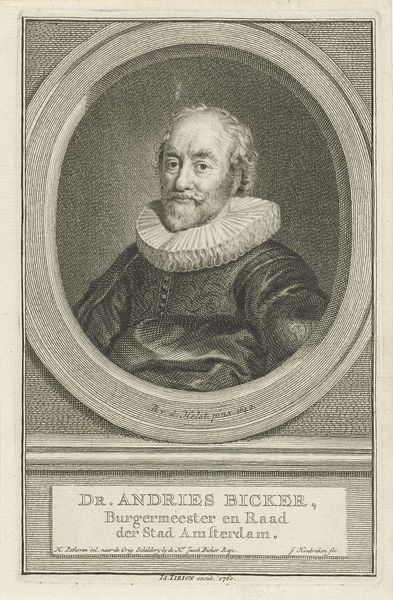
Dimensions: height 224 mm, width 148 mm
Copyright: Rijks Museum: Open Domain
Curator: So, here we have "Portret van Willem van Nassau-LaLecq," an engraving, dating from around 1840 to 1884, here at the Rijksmuseum. Quite striking, isn't it? Editor: My eye immediately goes to that elaborate ruff! It's like a paper sculpture surrounding his face. Makes you wonder about the labour involved in such meticulous detail, doesn't it? Curator: It does. The artist, Jan Frederik Christiaan Reckleben, really captures a sense of... gravity, maybe? There's a weightiness to his gaze that transcends the period fashion. It whispers tales of inherited power. Editor: Absolutely. Look at the material quality achieved here; that is the key, wouldn't you say? All those minute etched lines bringing a whole social structure to life, almost palpably so. Think of the engraver's labor, the repetitive, almost meditative action involved. This portrait is less about individual likeness, and more about class performance frozen into a print meant for wide consumption. Curator: That’s astute. And there’s something almost playful in the presentation despite its formality; his expression is so gentle and unthreatening. Editor: Playful? The stern facial features combined with the excessive sartorial display speaks to the function of the piece within the circuit of power and image. Curator: Yes, and also look at the inclusion of his coat of arms just beneath the portrait. It seems to add authenticity or, dare I say, approval, from higher entities! How do we respond to heraldry like that today? Editor: Well, historically, these printed portraits helped solidify social hierarchies, reinforcing the status of families. How different is this production from our modern modes? What's fascinating is tracing the line between old-world prestige and our age of viral imagery, and how wealth continues its parade across our various material fields, but maybe that's a too far afield. Curator: Not at all. In fact, that tension between permanence and fleeting image is precisely what keeps it so fascinating! We may smirk at the frills, but the drive behind the display, I think that still resonates. Editor: Exactly! Looking beyond the portrait reveals volumes about systems of image creation and their consumption. That is the historical lineage, not the man, that fascinates me most.
Comments
No comments
Be the first to comment and join the conversation on the ultimate creative platform.

